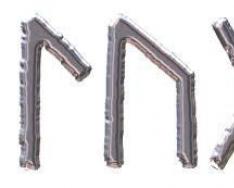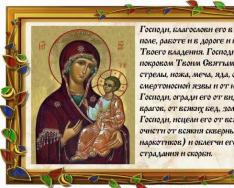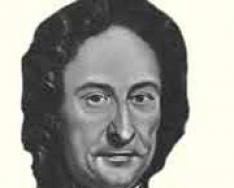Karlskirche is one of the most beautiful Catholic churches, the most popular attraction in Vienna and a true example of Baroque architecture. The building has been a protected city monument since the 18th century.
Karlskirche - history
The history of the Karlskirche begins in the distant 18th century, when Vienna was shaken by a plague epidemic. The then reigning Charles VI, Holy Roman Emperor of the German nation, while in St. Stephen's Cathedral, vowed that he would build a temple in honor of his namesake, Charles Borromeo, as soon as the terrible disease left the city. This oath was taken on October 22, 1713.
By the way, today one can come across assumptions that the appearance of the church was promised to God after the plague had subsided, as the emperor’s gratitude for salvation. However, history claims that Charles VI made precisely a vow - an obligation for the sake of getting rid of the pestilence.
The creator of the project for the new temple was determined through a competition in which famous Viennese architects took part. The winner was Johann Bernhard Fischer von Erlach, already famous by that time thanks to the Winter Palace of Eugene of Savoy and the no less famous Schönbrunn. Already in 1715 he completed the orders necessary for construction, and in 1716 he began work. Construction continued until 1737, and von Erlach himself died before the church was consecrated. The last stages of construction were carried out under the supervision of his son Johann.
Karlskirche - attractions of Vienna  Karlskirche Plaza - attractions of Vienna
Karlskirche Plaza - attractions of Vienna
Karlskirche - architecture
Despite the fact that in our time the Karlskirche building is usually classified as Baroque, it has clear eclectic features. Thus, the famous portico of the church reminds the viewer of the art of the ancient Greeks. On the triangular pediment of this element, the authors placed reliefs illustrating the horrors of the epidemic in a characteristic style.
The famous Roman Cathedral of St. Peter also left its mark on the architect’s work - the huge dome was built “in the image and likeness” of the Italian house of God. There is also an Islamic influence, which can be detected in the two towers that rise at the main facade. With their shape they resemble minarets (therefore, from a distance the temple looks like a mosque). However, some researchers claim that the towers copy their design from Trajan’s Column, built in Rome in 113 BC.
 Karlskirche - altar
Karlskirche - altar  Karlskirche - organ
Karlskirche - organ
Karlskirche - interiors
The interior of the Karlskirche church is no less majestic - the altar of the temple is decorated with a relief dedicated to the ascent of the patron saint of Vienna, Carlo Borromeo, to heaven. The building's paintings were mainly designed by Johann-Michael Rottmayr. In her frescoes, the image of the emperor's namesake saint is repeated several times.
By the way, visitors to Wiener Karlskirche have the opportunity to see even the tallest drawings up close. This became possible thanks to the construction of an elevator in 2002, with the help of which it was planned to restore those same frescoes. It was initially assumed that the lifting mechanism would be dismantled after the work was completed, but this did not happen. As a result, the elevator, which takes visitors to a height of 32 meters, continued to work and bring in money.
You can go higher, but only on foot - with a maximum building height of 72 meters to observation deck Only stairs lead.
Karlskirche: opening hours and cost of visiting:
Opening hours:
Monday to Saturday: 9 a.m. to 6 p.m.
On Sunday and holidays: 12 to 19 hours
Price:
Adults: € 8,-
Schoolchildren and students: € 4,-
Children under 10 years old free
Address: Karlsplatz 10, 1040 Vienna
Vienna offers tourists many attractive places. One of the unusual buildings in the capital of Austria is the famous church, built by the equally famous architect J.B. Fischer von Erlach - St. Charles Church (Wiener Karlskirche).
Church history
The Church of St. Charles in Vienna owes its appearance to Charles, who, in gratitude to his patron for saving the city from the scourge of the plague, promised to build a church in his honor in Vienna. The architect, having taken on the task of translating Karl’s request into reality, decided not only in the best possible way to glorify the patron saint, but also to create a beautiful architectural monument. And he succeeded, judging by the enormous interest of tourists who arrive in Vienna and always rush to visit the church in Vienna along with other attractions.
The creation of a great architect
There are many interesting churches in the capital of Austria, but this particular church attracts guests with its originality. The Church of St. Charles represents a unique reunion of Italian and French Baroque. This church is located in the central part of Vienna, it has absorbed the influence of the Baroque style from the heyday of Rome.
Any religious building always looks like the embodiment of a divine idea on earth. Looking up at the huge cathedrals, a person feels like just an earthly being next to such structures. When starting to build churches, architects always sought not only to build the best masterpiece of art, but also to invest a certain sacred meaning in their creation. When erecting a church in Vienna, Fischer von Erlach tried to embody the best architectural ideas contained in famous churches Rome, Jerusalem, Istanbul.
The church in Vienna is striking in its uniqueness. Luxurious columns, an oval dome, low towers - all this reveals the enormous talent of the architect. The structure consists of a central core, which is surrounded by additional compartments. The most impressive detail of the Church of St. Charles are the huge columns, which are decorated with reliefs on a religious theme. These images glorify Charles. In addition, two of the columns bear a clear hint of the emperor's coat of arms. Inside the Church of St. Charles, the space is oval-shaped. The architect managed to combine different architectural traditions in his workshops. The result of his efforts was the realization of a real masterpiece - a church that radiates harmony. Unfortunately, the architect Fischer von Erlach was not destined to complete his creation. After his death, his son Joseph Emmanuel Fischer worked on the Church of St. Charles.
In the Church of St. Charles you can see frescoes that tell about the life of Charles Borromeo. In addition, in these frescoes there are hidden hints of the main four virtues: prudence, moderation, courage, justice. On the main altar in the church there is a wonderful and original stucco relief depicting Charles Borromeo. The composition looks like this: Karl ascends to heaven on a cloud, and he is surrounded by beautiful cherubs.
- Address: Hendrik Conscienceplein 12, 2000 Antwerpen, Belgium
- Telephone: +32 3 231 37 51
- Website: carolusborromeus.com
- Years of construction: 1615-1621
- Cost of visit: for free
One of the most iconic is the Church of St. Charles Borromeo, built in the Baroque style between 1615 and 1621. The splendor and grandeur of this amazing temple never ceases to attract local parishioners and tourists from all over the world.
History of the creation of the churchThe project to build the temple was developed for a long time by the Jesuit brothers. After the order was disbanded in 1773, Carlo Borromeo, archbishop of Milan, became the new patron of the church. For some time there was a religious school in the building, and only in 1803 the church received parish status.
The year 1718 became fatal for the Church of St. Charles Borromeo. On July 18, the building was struck by lightning, resulting in a terrible fire. The raging elements destroyed 39 priceless paintings by Rubens and most of the unique marbles. Only the asps of the main altar and the chapel of Mary remained intact. You can still admire their original appearance.
Architectural features of the church in AntwerpThe famous painter Peter Paul Rubens worked on the design of the façade of the temple and the interior. When developing the project, the architects took as a basis the example of the first Jesuit church - the Roman Il Gesu.
The final result of the work is a basilica consisting of three naves. The side naves are supported by elaborate columns, and above them are galleries with large windows. In the main nave there is a choir, which is divided along its entire width by a wooden altar railing. The asp is framed by a crown of chapels; on the left you can see the altar dedicated to Francis Xavier, and on the right is the chapel of the Virgin Mary, which survived the fire. The confessional halls are made of dark wood and decorated with sculptures of angels and biblical characters.
A striking feature of the interior are the works of the painter Cornelius Schut. Rubens's paintings, which previously decorated the temple, were transferred to the Museum of Art in Vienna. An outstanding detail in the Church of St. Charles Borromeo is the original mechanism that changes the paintings behind the altar. It has been kept in the temple since the 17th century and is still in use, impressing tourists and parishioners. For its luxurious decor, the church received the name “Marble Temple”.
How to get to the Church of St. Charles Borromeo?
You can get to the temple by . Trams No. 2, 3, 15 go from the Groenplaats stop, No. 10, 11 from the Wolstraat stop, No. 4,7 from the Minderbroedersrui stop and No. 8 from the Meirbrug stop.
You can also visit the attraction by taking buses No. 6 and 34 from the Steenplein stop, No. 18, 25, 26 from the Groenplaats stop and No. 9 from the Minderbroedersrui stop.
 |
 |
In Vienna, Karl stole corals from Clara, and Clara stole a clarinet from Karl. On Karl Square (aka Karlplatz) stands the amazingly beautiful and graceful Church of St. Charles (aka Karlskirche), which Emperor Charles VI of Habsburg erected in honor of his heavenly patron- Saint Charles Borromeo.
The church is very unusual, it combines elements of different styles and eras: an ancient Greek portico, ancient Roman columns, two Baroque pavilions and a large dome... But in general it is Viennese Baroque :)
The reason for the construction of this church was the plague epidemic in Vienna, which devastated the city in 1713. And the construction itself lasted from 1716 to 1737.
By the way, in the center of Vienna in the middle of the city square stands the Plague Column in the Baroque style, erected in 1693. The monument is dedicated to the Trinity, not the Virgin Mary. In addition, the pillar itself is almost invisible, as it is drowned in marble clouds, figures of saints, angels and putti.
Reference: Putto (or putti) - artistic image little boy, found in the art of the Renaissance, Baroque and Rococo as a sculptural or pictorial motif for decorating the interior of premises. Unlike the winged Eros (Cupid), as a rule, putti did not have wings
Angels (or archangels) at the entrance to the church symbolize the Old and New Testaments.
On the facade of the building you can see images of 4 virtues: Repentance, Mercy, Humility and Faith. Also depicted here is St. Charles, who defended Vienna from the epidemic.
The image of St. Charles is again repeatedly depicted in reliefs on the columns. The pediment depicts the torment of city residents during the plague epidemic.
Reference: Carlo Borromeo (1538-1584) - cardinal and saint catholic church. During the plague epidemic of 1575-1578, he took care of the dying and performed rituals over the dead. He was canonized in 1610.
A rich collection is also dedicated to the veneration of Carlo Borromeo. interior decoration temple.
The main altar is decorated
relief image of the saint's ascension to heaven.
The walls and ceilings are decorated with magnificent works of famous artists.
The ceiling frescoes are amazing
they particularly depict the life of Charles Borromeo.
Currently, the church operates as a museum. Open from 9:00 to 18:00. Price 8 euros.
In the evenings, the church organizes classical music concerts, which mainly feature the music of Mozart.
The church has an observation deck, which is located under the dome at an altitude of 72 m.
We first go up using the elevator, and then we still need to walk up the stairs.
During this climb, you can appreciate the magnificent painting of the dome from a close distance.
It’s just a pity that the beautiful panorama of the city is disrupted by the protective mesh on the windows.
We really liked the church itself. Definitely worth a visit :)
Karlskirche
Karlskirche - St. Charles's Cathedral is located in the Wieden district of Vienna, on the south side of Karlplatz, next to the Technical University. The cathedral is not entirely unusual for Vienna and is a bit oriental style It immediately attracts attention and is especially beautiful at night, when special lighting on the building is turned on.
History of Karlskirche
The history of this unusual temple began in 1713 and is associated with the plague epidemic that raged in Austria, from which many Viennese residents died. The Karlskirche, which translated from German means “Charles’ Church,” owes its birth to Emperor Charles VI, who took an oath to build a church in honor of his patron Saint Charles Borromeo in order to forever ward off the Black Death from the city. It was Saint Charles who was considered the main savior from the plague and It was to him that people first prayed for a cure for this disease.

Paintings on the dome - the intercession of St. Charles Borromeo with the support of the Virgin Mary
A competition was announced for best project, in which many famous architects of the time took part. The competition was won by the court architect Johann Bernhard Fischer von Erlach, who at that time was 57 years old and already had behind him such famous masterpieces as Schönbrunn Palace, the arena building in the Hofburg in Vienna, the City Palace of Prince Eugene of Savoy in Prague and many other works. Among his contemporaries he was known primarily as a master of palace architecture. The Church of St. Charles became his final project, in which he realized many of his creative ideas. According to the author's idea, the new cathedral was supposed to symbolize the strength of the Habsburgs, the greatness of Vienna, as well as the Roman and Byzantine roots of the Holy Roman Empire.
The architecture of the church intricately mixed many different styles and elements, which, despite their heterogeneity, look very organically together.
Two huge columns on the sides of the building resemble Trojan's Column in Rome, the elongated dome evokes memories of St. Peter's Basilica in Rome, and the temple itself resembles main church Constantinople - St. Sophia Cathedral. In 1723, the architect died without completing the project. The construction of the church was continued by his son Joseph Emanuel, who partially changed his father's original plans. The construction was completed in 1737, so it took 24 years to build the church.

View of the dome with elevator and observation deck
Interior of the temple
The inside of the Karlskirche is also very beautiful. On the main altar is a stucco figure of the patron saint of the Cathedral, St. Charles, who ascends to heaven accompanied by angels. Of particular interest are the paintings on the dome, created by 18th-century artists Johann-Michael Rottmayr and Gaetano Fanta. The most famous painting is “The Intercession of St. Charles Borromeo with the Support of the Virgin Mary.” The church organ was installed in 1847, the name of its creator is unknown. In 1989, the organ was reconstructed and updated.

IN present moment The cathedral has an elevator that allows visitors to rise to a height of 32 meters and take a closer look at the dome, painted with unique ancient frescoes. The elevator was installed in 2002 during restoration work and after the restoration was completed it was decided to leave it. Unfortunately, the iron structure greatly spoils the interior of the temple. There is no way to look at the panorama of Vienna from the dome - the windows are covered with a very dense mesh, through which little is visible and many who go up remain disappointed. The lift costs 8 euros.
Food


